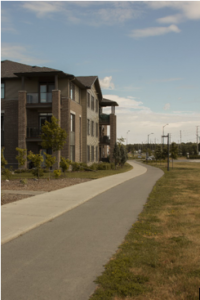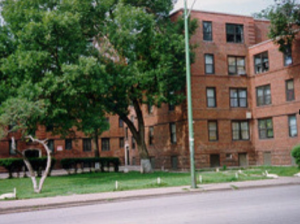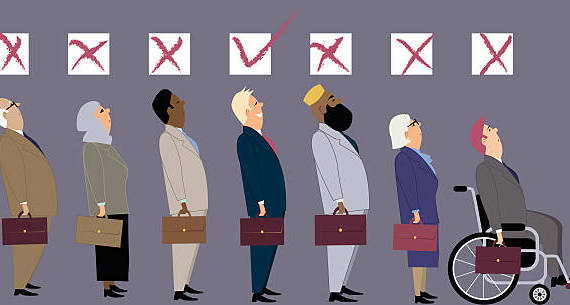Social Cohesion—An Essential Element of the Social Determinants of Health
Social Cohesion – Start With the Relationship
The Social Determinants of Health include five separate pillars; the first is Social and Community Context. Within Social and Community Context is social cohesion. A key element when discussing social and community context. We can define social cohesion as the presence or absence of bonds constituting the very fabric of nature.
Bertrand Rusell wrote the following “Social cohesion is a necessity, and mankind has never yet succeeded in enforcing cohesion by merely rational arguments.” Harry Truman said, “all will concede that in order have good neighbors, we must also be good neighbors. That applies in every field of human endeavor.” This article will provide rational arguments as I further define the nature of social cohesion.
Social Cohesion Defined
Social cohesion is an integral part of social capital, so we begin with a definition of social capital. We define social capital as links, values, and understandings in society that enable individuals and groups to trust each other and work together. The negative consequences of lack of social capital include inner-city gangs, unsafe streets, and crime.
Social cohesion is a psychosocial process that creates a sense of emotional investment and attachment between two or more people. There is also the concept of neighborhood cohesion which expands the social constructs to the community. It extends the individual process to the entire neighborhood with trust, mutual aid, and support. Cohesion is the creation of a union; the value of that union is why it is a part of the Social Determinants of Health.
Social Cohesion and Risks – Defined
The risks associated with social cohesion bear a similarity to the risks related to Social Determinants of Health. The less a person experiences social cohesion, the worse their physical and mental health—the lower social cohesion, the greater the risk of coronary heart disease. In one study, greater social cohesion reduced the risks of hypertension. Low neighborhood social cohesion is associated with short sleep duration, which negatively impacts health.
Multiple studies have looked at the relationship between social cohesion and mental health. Findings include a link between low levels of social cohesion and high levels of negative stressors that increase depressive symptoms over time. In longitudinal studies, there is a relationship between lower social cohesion and greater levels of anxiety.
We can look at both the risks related to mental health and physical health as social cohesion lessens. But the real risk, as with many Social Determinants of Health, is a risk of mortality that increases as social cohesion lessens.
Social Cohesion and Risks – The Relationship
To understand the relationship, we will revisit the definition. Social cohesion is a core element within a community that brings the community together to meet the community’s needs, Or as Helen Keller said, “Alone we can do so little; together we can do so much.” Supportive family, friends, and neighborhood cohesion are positively related to better health, but family conflict adversely affects health.
The challenge to social cohesion relates to the neighborhood; there is a linkage between higher levels of social cohesion and a belief in the perceived safety of the neighborhood. Safety includes walkability, access to healthy foods, and fear of crime. Often social cohesion is most challenging in the most deprived neighborhoods.
To better identify the relationship, each one unit lower in social cohesion is associated with a greater odds of trouble falling asleep. Similarly, there was a 13.1% decreased odds of smoking with a one-point gain in social cohesion score. The odds of PTSD increased in neighborhoods with low social cohesion compared to neighborhoods with higher levels of social cohesion.
The role of the neighborhood impacts the ability to increase social cohesion, higher levels of safety associate with higher perceptions of social cohesion. If the neighborhood supports social cohesion, the advantages include sharing health information, promoting behaviors like walking and or exercising, deterring negative behavior in the neighborhood, and advocating for change.
It may be as simple as going from this:

To this:

Or at least it is a start.
What Can We Do
The Learning Families Project established a series of community-based activities designed to enhance the neighborhood and social cohesion. The project included family-focused and community-focused activities to increase cohesion. They used posters, leaflets, and a banner to gain interest in the kick-off program. They relied on multiple means of spreading the word, including portable information counters and door-to-door canvassing. The results of the program created greater trust between neighbors and an increased closeness in the neighborhood.
Another program involves a social networking application, Time for Wellness, to leverage social cohesion. Participants can enroll in the Nextdoor platform and join a group of their neighbors to establish connection and cohesion. The application will provide ideas to improve health. The program’s goal is to increase social cohesion and improve women’s health practices in low-income neighborhoods.
To further address social cohesion adding green spaces to a neighborhood surrounded by concrete. Community engagement strategies in disadvantaged areas should always include social cohesion in their strategy. Such a strategy is critical as we consider addressing the mental and physical health challenges of COVID-19. Social cohesion is a way to share health information effectively. As an example, a recent study found that each statistical increase in social coherence was associated with a greater likelihood of getting a flu shot.
To determine your client’s level of social cohesion is easy; six questions is all it takes.
(1) People can depend on each other in this community;
(2) Living in this community gives me a secure feeling;
(3) People here know they can get help from the community if they are in trouble;
(4) This is not a very good community to bring children up in;
(5) There is a feeling in this community that people should not get too friendly with each other;
(6) If I had an emergency, even people I do not know in this community would be willing to help
Note that when scoring, you would reverse score the items 4 and 5. The questions are few and simple, but the answer will tell you your client’s level of social cohesion, the first step.
Final Thoughts
There may not be one correct answer to addressing social cohesion, but I am confident there is no correct answer in inaction. We have to understand that better physical and mental health links to social cohesion, and we have to address those areas in this country that does not support social cohesion. The social determinants of health define those areas that impact health, so without a commitment to build up the pieces, we will never reach the goal of good physical health and mental health.



